
Kings Theatre, Brooklyn, NY
Photographer Matt Lambros‘ love of exploration started early, when his grandmother took him and his brother on expeditions to abandoned barns in Dutchess County, New York. That intrepid nature never left Lambros, who transformed his love for abandoned spaces into a project about America’s old movies theaters, After the Final Curtain.
Lambros has crisscrossed the United States to shoot more than 100 abandoned theaters, and recently released a book of his best work, After the Final Curtain: The Fall of the American Movie Theater. His photographs capture a bygone era when boutique movie theaters were architectural masterpieces that captivated the audience as much as the films they projected.
The series took shape in 2008 after Lambros took in a film at the Village East Cinemas in Manhattan. The historic movie theater, which opened in 1926, opened the photographer’s eyes to a world of cinemas that were slowly dying off. Now, he works with the arts organizations who are trying to revitalize these spaces, as well as private owners, who open the doors and allow him to document the current state of these marvelous buildings.

Boyd Theatre, Philadelphia, PA
Photo shoots can be hit or miss when dealing with desolate, crumbling locations like abandoned theaters. Lambros tells us of one instance where he scouted an old movie theater in New Jersey, only to find it partially demolished when he returned to shoot a few weeks later. And one cinema on his wish list, Uptown Theatre in Chicago, won’t allow photography. But this hasn’t deterred his work in documenting this important part of American history.
In an age when the way we consume entertainment is evolving, we asked Lambros his thoughts on this loss of grandeur and his hope for the future of cinemas.
“I think the way we consume entertainment evolves as our technology progresses, and will continue to do so, but that doesn’t mean that movie theaters are going anywhere. They just aren’t as grand as they were when these theaters originally opened. These buildings were constructed around the time of the Great Depression, and the average person didn’t travel as much or as far from home as they do today,” Lambros writes via email.
“That’s part of the reason these theaters were designed to look like an Italian castle’s courtyard at night. One of the other reasons is that movie going was much more of an event than it is today. Patrons would see an orchestra perform, maybe there was a live act, or a cartoon short, and a newsreel. All of that happened before the feature presentation started! Some of the more successful theater chains, like the Alamo Drafthouse, have been looking to the past and making movie-going an event once again.”
Matt Lambros has photographed more than 100 abandoned theaters across America for his project, After the Final Curtain.

Adams Theatre, Newark, NJ
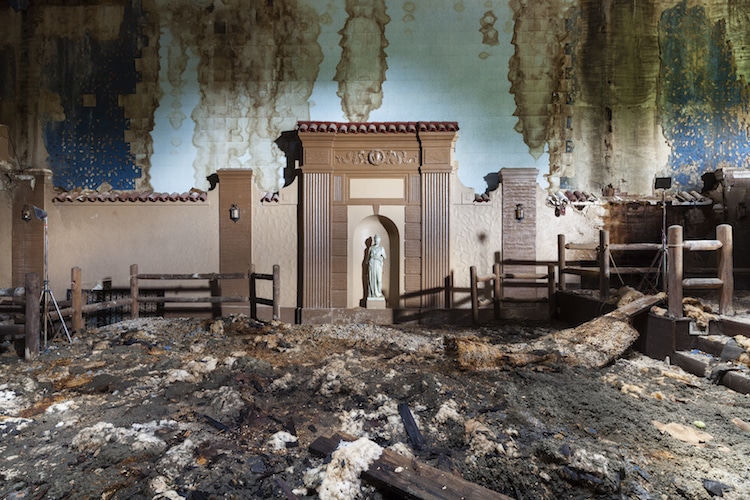
Paramount Theatre, Marshall, TX

Franklin Park Theatre, Boston, MA
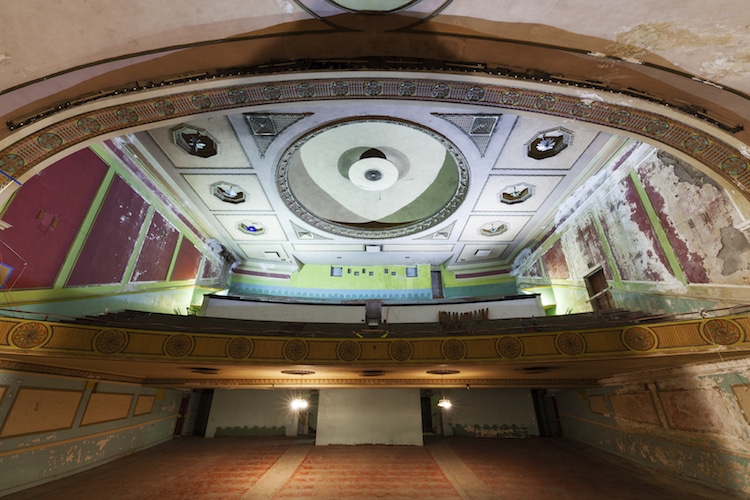
Jayhawk Theatre, Topeka, KS
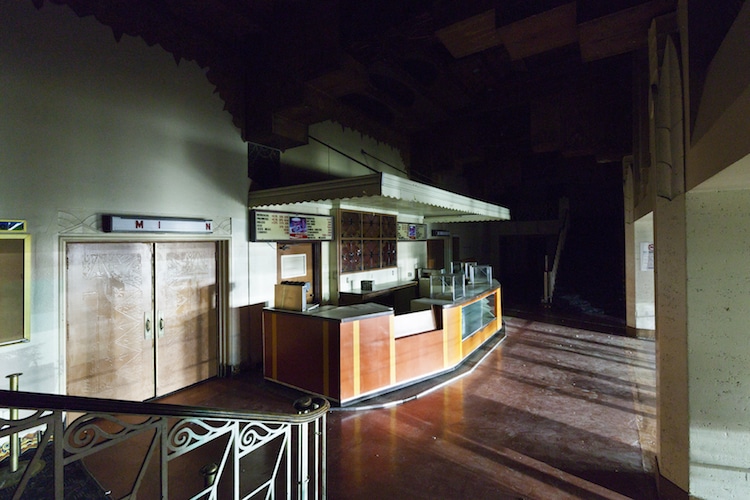
Warner Theatre, Huntington Park, CA
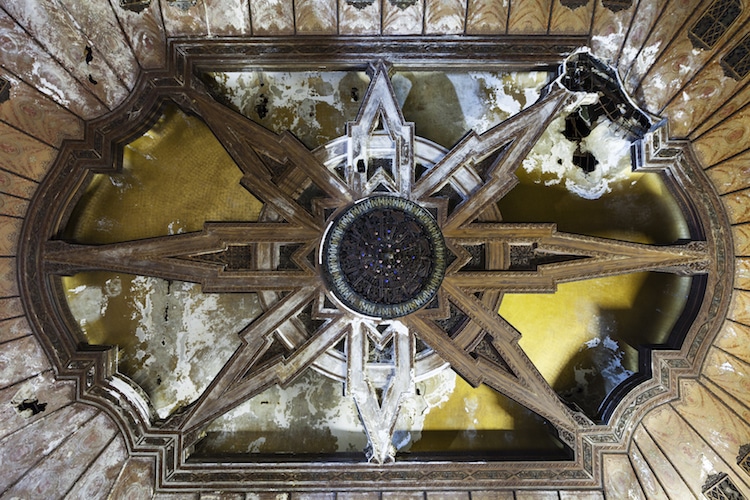
Loew’s Canal Theatre, New York, NY

Fox Theatre, Inglewood, CA
Many of these old movie theaters are now run by arts organizations, who are trying to preserve their history.

Adams Theatre, Newark, NJ
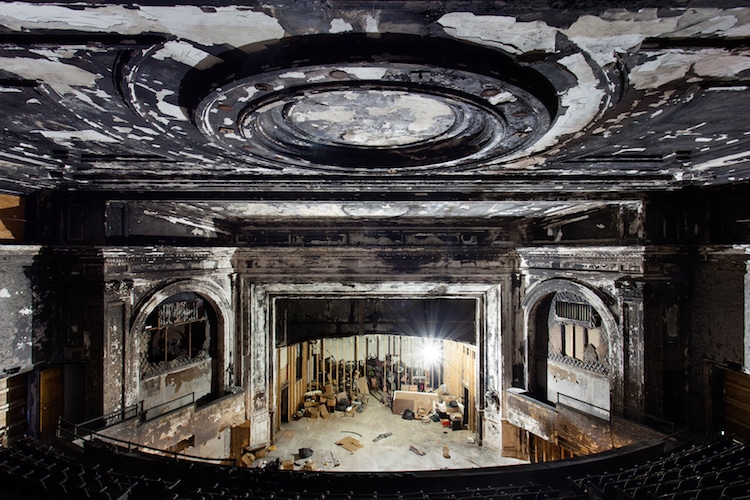
Franklin Park Theatre, Boston, MA
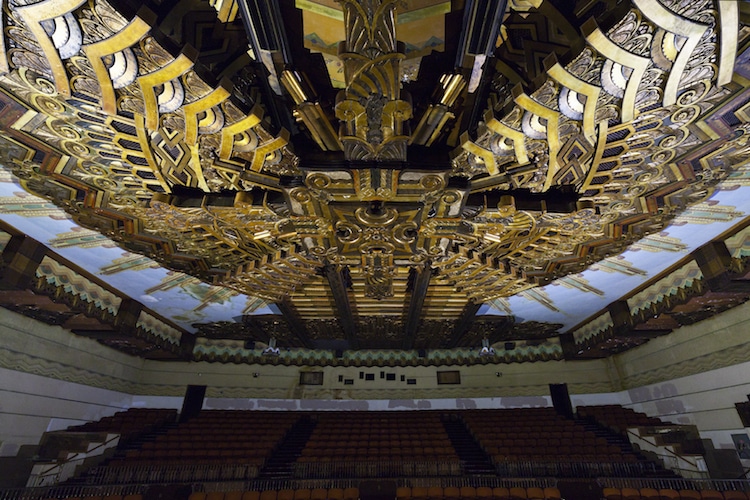
Warner Theatre, Huntington Park, CA
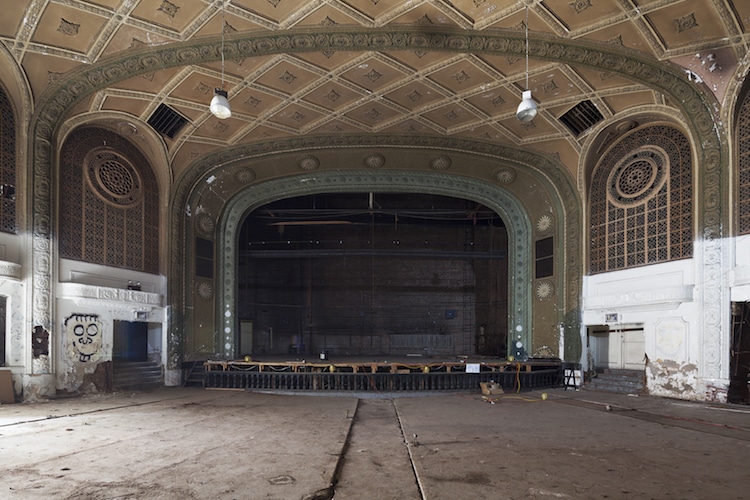
Variety Theatre, Cleveland, OH

Uptown Theatre, Philadelphia, PA
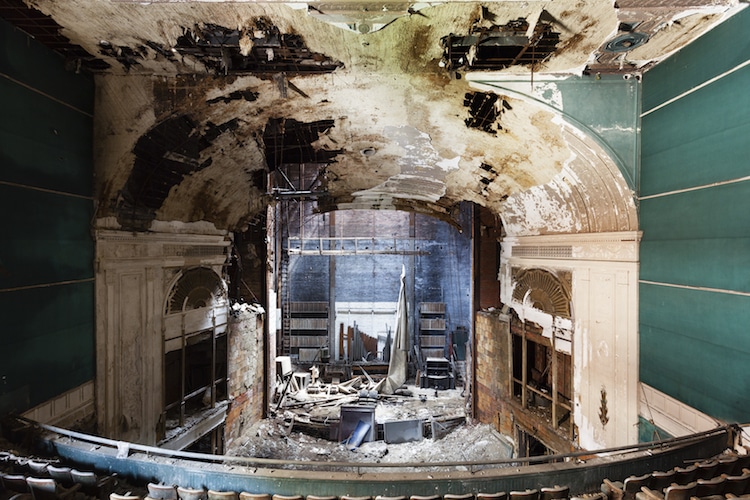
Liberty Theatre, Youngstown, OH

Fox Theatre, Inglewood, CA
After the Final Curtain: Website | Facebook | Instagram | Book
Matt Lambros: Website | Instagram
h/t: [Dezeen]
